|
BISHOP’S TIPPLE
It is always a pleasure to welcome a new historical mystery by Andrew Taylor for the mystery is usually very satisfying and the history reimagined superbly. Out this month, The Shadows of London [HarperCollins] sees Taylor on his favourite hunting ground, Restoration London and its recovery from the Great Fire, and series heroine Cat Hakesby (formerly Lovett) is, in 1671, quite literally restoring the devastated city – and who would have thought a property developer could be a sympathetic character?

Cat certainly is and, for the period, a fiercely independent and resourceful one who claims ‘God made me to build houses, not keep one for a husband.’
When her workmen discover a body on site, and it is clearly not an archaeological find, it is the start of conspiracy which involves James Marwood, Cat’s sidekick (not the right word, but Cat would approve) and the trail leads to the highest levels of government and the court of King Charles – Charles II, not the present one.
Interestingly, that first body is found on land owned by the Bishop of Ely, the city which boasts a spectacular cathedral known as ‘the battleship of the Fens’ some 80 miles from London. Now that may seem unusual to anyone unfamiliar with ecclesiastical history, but not to the many Londoners who have enjoyed the hospitality of Ye Olde Mitre, that fine tavern off Ely Place (the clue is in the address), which is to this day owned by the Bishop of Ely. A visit there, like Andrew Taylor’s novel, is a real treat.
[If I may be allowed a digression – and I am because it’s my column – I have fond memories of my first visit to Ye Olde Mitre. I was invited, many decades ago, to attend the launch of Molson Draught (Draft) Ale, which the Canadian brewer planned to introduce into the UK. I never understood the connection between a Canadian beer and a 400-year-old London pub – perhaps the Bishop of Ely owned shares – and the launch, although a jolly affair, did not trigger a wave of Canadian imports.]
HAMMOND’S WAY
I have finally managed to watch – thanks to a television channel numbered over 80 (who knew?) – the 1948 film Snowbound based on the novel The Lonely Skier by Hammond Innes, which I know is Dame Stella Rimington’s favourite Innes thriller. It was the first of Innes’ novels to be filmed and deals with a film being made, or at least planned, in the Italian Dolomites shortly after the war, giving scope to sub-plots about Nazis and missing gold.
.jpg) 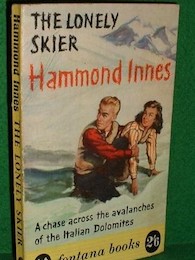
It is a very British film which, probably for reasons of budget, resists featuring much of the spectacular scenery described in the book and concentrates the bulk of the action to the interior of a ski lodge. The cast is headed by Robert Newton (who doesn’t actually appear much) and Dennis Price (not known for action-hero roles), with comic relief provided by Stanley Holloway (who is outshone by a couple of Italian extras on that score) and the wonderful Herbert Lom as the foreign baddy. It is not a very good film and Hammond Innes was much better served in subsequent film adaptations of his books, for the simple reason that they would have better scriptwriters.
When his Antarctica-set adventure The White South was filmed as Hell Below Zero in 1954, the screenplay was by Richard Maibaum, who was to script many of the James Bond films; for Campbell’s Kingdom (1957), the screenwriter was Robin Estridge, a prolific crime-writer under the name Philip Loraine; and for The Wreck of the Mary Deare in 1959, the writer was Eric Ambler no less.
For the terminally young or the ill-read, Hammond Innes (1913-1998) was the bestselling author of adventure thrillers from the 1940s into the 1960s. Such was his success in the mid-1950s that Ian Fleming was envious of the first edition print-runs on Innes’ hardbacks and desperate for his own publisher to match them. Innes had actually written four novels before WWII, which had earned him, in total, £120. Resuming his writing career after the war, he hit the big time and by 1958 his paperback publisher (Fontana) was boasting that he was now earning £120 per page.
POSTHUMOUSLY
The publication by Hodder in June of Standing in the Shadows will be tinged with sadness as it will be the twenty-eighth and final Inspector Banks novel by Peter Robinson, who died last year.

Although he lived in Canada, Peter Robinson never left his Yorkshire roots far behind and his posthumous novel features a back story in Leeds in 1980 and the contemporary discovery of a body at Scotch Corner – a legendary land mark for any Yorkshireman travelling north or for anyone who was in the army at Catterick.
Peter Robinson’s stories will be missed by his many loyal fans who appreciated, in the words of his editor Carolyn Mays, the richness and depth of his characters.
And on another sad note, I have to record the death of Rupert Heath, the founder of the Dean Street Press. Rupert and I never met, but we emailed each other many times over the years, usually in connection with ‘Golden Age’ detective novelists and Rupert’s dedication to getting many of them back into print.
Personally, I think his finest hour was to revive the 1907 Roy Horniman novel Israel Rank, which is far better known as Kind Hearts and Coronets.
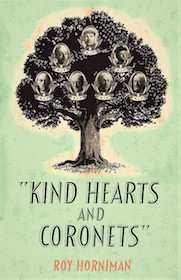
THE EMPIRE STRIKING BACK
Those gleefully enthusiastic American publishers at Stark House Press continue to show up my ignorance by presenting me with another hardboiled author I was unaware of; and an Englishman to boot.
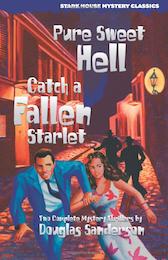
Douglas Sanderson (1922-2002) was born in Kent, served in the merchant navy and then the RAF during World War II, emigrated to Canada and latterly lived in Spain. In the 1950s, while living in Montreal, he began writing fiction hoping to emulate the success of the then bestselling Mickey Spillane. Over ten years he wrote two dozen hardboiled crime stories under his own name and the pen-names Malcolm Douglas and Martin Brett.
Pure Sweet Hell, first published as a Fawcett Gold Medal paperback in 1957, has been reissued in the Stark House Mystery Classics series of double volumes along with Catch a Fallen Starlet from 1960. Like the narcotics at the heart of the story, I found it rather addictive. Set in a seedy Spanish town (almost certainly Alicante), we meet our hero Bishop successfully smuggling in cocaine from Naples in an attempt to set up a regular marketing network. Bishop, who gets beaten up, sapped and shot at for his trouble, is of course not really a merchant seaman on the make, but an undercover FBI agent and he immediately has big problems on his hands: there’s a three-hour wait to put through a phone call to Naples, he discovers his contact in Spain has been murdered and his sample packs of cocaine have been stolen by a predatory female bar-fly with a voice ‘full of broken bottles’.
The action, which is virtually non-stop, is a frantic, violent tour of back streets and dodgy bars (where one of the female regulars is described as ‘fine-looking in a fang, claw and whipcord sort of way’) and Bishop is put through the wringer. Unlike the typical Mickey Spillane hero, though, there is a vulnerability to Sanderson’s protagonist and although at times it seems that a cloud of despair floats over him, when he survives his mission – in the company of the wonderfully-named Banjo Kelly – the reader is delighted that he feels it is ‘a good day and everyone was glad to be alive’.
Sanderson’s books did well enough in North America and France, though I was unaware of them in the UK until Stark House insisted on adding to my groaning To-Be-Read pile, for which, I admit, I am grateful.
And those other impetuous Americans at Brash Books also clearly think I do not have enough to read at the moment and have kindly sent me another Jimmy Sangster title (of which I was previously unaware), Your Friendly Neighbourhood Death Peddler which I think has been out-of-print in the UK since 1971.
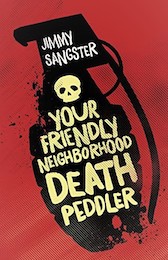 The Brash Books revival edition comes with a warning that the novel, written by British screenwriter Sangster, may contain such dangerous things as British grammar, spelling and punctuation. There is also the usual (these days) caveat about how sexual attitudes and language may have changed in the years since it was written, which the more observant reader will have noticed by Chapter One where females are either ‘birds’ or ‘old cows’. The Brash Books revival edition comes with a warning that the novel, written by British screenwriter Sangster, may contain such dangerous things as British grammar, spelling and punctuation. There is also the usual (these days) caveat about how sexual attitudes and language may have changed in the years since it was written, which the more observant reader will have noticed by Chapter One where females are either ‘birds’ or ‘old cows’.
I am also grateful, I suppose, to Brash Books for introducing me to Australian (I think) author Dawn Farnham – about whom more next month. Doing some basic research, I discovered an entry on her Facebook page which quotes a Glossary of Book Blurbs, defining their real meaning. I am not sure who created this glossary, but it is so good, I steal it with impunity:
Enchanting – there’s a dog in it
Heart-warming – a dog and a child
Moving – child dies
Heart-rending – dog dies
Thoughtful – mind-numbingly tedious
Haunting – set in the past
Exotic – set abroad
Audacious – set in the future
Award-winning – set in India
Perceptive – set in North London
From the pen of a master – same old same old
In the tradition of – shamelessly derivative
Spare and taut – under-researched
Richly detailed – over-researched
Disturbing – author bonkers
Stellar – author young and photogenic
Classic – author hanging in there
Vintage – author past it
SAFELY ENCHANTING
 Using the Glossary above, I think I can safely say that The Dog Sitter Detective [Allison & Busby] is the enchanting new novel by Antony Johnston as it features a pair of pedigree Salukis as sidekicks to retired actress and amateur detective Gwinny Tuffel. Using the Glossary above, I think I can safely say that The Dog Sitter Detective [Allison & Busby] is the enchanting new novel by Antony Johnston as it features a pair of pedigree Salukis as sidekicks to retired actress and amateur detective Gwinny Tuffel.
It is the first in a projected series of cosy crime novels, each featuring a different breed of dog in the charge of, and as an adjunct to, the dog-sitting detective and I am sure the series will be a great success, especially among dog-lovers. What puzzled me was the nagging thought: could this traditional, cosy crime story have been written by the same Antony Johnston who wrote the anything-but-cosy graphic novel The Coldest City which was made into the film Atomic Blonde?
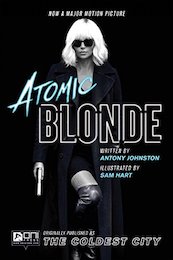
RED CARPET IN A GOOD CAUSE
Screenwriter and novelist Samantha Lee Howe, a familiar and popular face at the annual CrimeFest conventions in Bristol, had a personal red carpet event this month and all in a good cause.

The event was a special screening of the film based on her 2020 novel The Stranger in Our Bed [HarperCollins/One More Chapter] at the Penistone Paramount cinema in Sheffield, in aid of the Yorkshire-based charity IDAS - Independent Domestic Abuse Service.
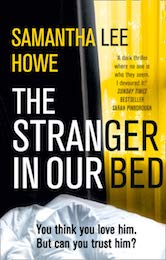 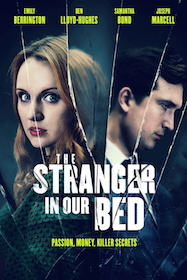
Samantha, herself a survivor of child abuse and domestic violence, is a Survivor Ambassador for the charity IDAS, which supports those affected by domestic abuse and sexual violence and is the largest such specialist service in the north of England.
|
|
BOOKS OF THE MONTH
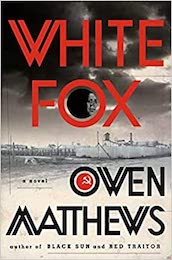
Owen Matthews has certainly put his series hero rebellious KGB Lt-Colonel Alexander Vasin through the wringer in previous books and his third outing, White Fox [Bantam], opens with Vasin ‘promoted’ to be in command of a remote gulag prison. If he has been put there for his own safety, it wasn’t a good career move as events, by which I mean violent trouble, follow him to the Arctic. When another disgraced KGB officer is sent to Vasin’s gulag (and Vasin is ordered to protect him) there is clearly something going on within the KGB and the setting, November/December 1963, suggests it may have something to do with a recent assassination in Dallas, Texas. A revolt by Chechen prisoners means that Vasin has to make a prison-break from his own gulag and go on the run with his mysterious special prisoner, who may or may not be defecting to the Chinese. From the icy tundra to Leningrad to Estonia and the Baltic, the hunt is on for Vasin, who seems destined to be betrayed at every turn. White Fox is a white-knuckle ride through the grey paranoia of Cold War Soviet Russia, which Owen Matthews conjures up quite brilliantly.
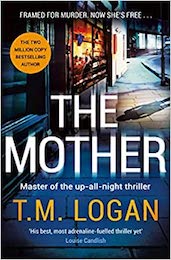
The Mother by T.M. Logan [Zaffre] opens with the mother in question catching sight of her two sons for the first time in ten years – at her own funeral. Nothing supernatural here, just a cunning introduction to Heather Vernon, freshly released on licence from prison after serving half her sentence for murdering her MP husband. Convinced she was framed, Heather sets about proving her innocence, though absolutely nobody believes her except, perhaps, a paranoid journalist and a young, druggy drop-out ex-prisoner, who thankfully has the street smarts Heather lacks and she needs them, faced with a conspiracy enforced by very nasty bad men. Prison hasn’t taught Heather anything much about survival (though she did see The Revenant while inside) and seems, at first, to be shocked that the young female colleague recruited to her cause carries a knife. Quite a few knives are involved in the story, not to mention polythene bags and shotguns, and there’s a villain who cannot resist monologue-ing thereby giving a surprise cavalry time to ride to the rescue.
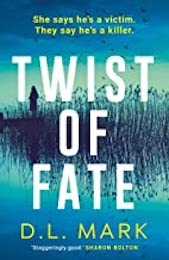
Opening with a public massacre by a knife-wielding fanatic in London – a sadly not inconceivable event – Twist Of Fate by D.L. Mark [Head of Zeus] turns into a Gothic horror involving a religious cult based around the Anglo-Saxon hermit Saint Guthlac, hallucinogenic drugs, flagellation, flaying, suicide and twisted, very twisted, religious beliefs all taking place in an isolated Fenland village. Twin narratives are provided by the sister of one of the victims (or was he really the instigator?) of the knife attack, and particularly obnoxious police detective with a drinking problem. Reminiscent, for those of certain age, of the work of John Blackburn sixty years ago, it’s grim, gruesome and absolutely gripping.
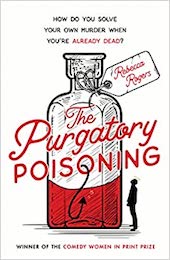
The whackiest murder mystery of the month, possibly ever, must be The Purgatory Poisoning by Rebecca Rogers [HarperCollins]. Dave wakes up in Purgatory – his personal Purgatory, on the bottom bunk of the Cornish Youth Hostel he visited on holiday in 1992, and one has to consider that if that is his version of Purgatory, how bad can his version of Hell be? Being in Purgatory, and atoning for past sins in order to ‘move on’ is not his only problem as he learns he is not only dead, but has been murdered. With the help of an angel who looks suspiciously like Michael Palin and a demon who snorts fire, he sets out to discover who killed him, in order to get in to God’s good books. It should come as no surprise (spoiler alert!) that God is a woman.
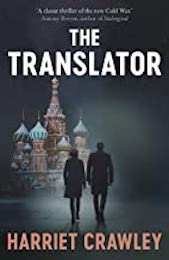
The late, great Reginald Hill might well have put The Translator by Harriet Crawley [Bitter Lemon] ‘at the Jane Austen end of spy-fiction’ (and Reg wrote a several very good spy novels), as it is very much the story of a rekindled romance between two government translators, one British, one Russian. The female, Russian, half of this relationship wants to defect, but not being a spy per se, has no secrets to trade, so has to find some. Fortunately the Russians are busy launching a whole slew of low-level satellites and they are not doing it simply to improve their Wi-Fi coverage. Whilst the book is written by someone who clearly knows her Russia, the setting is 2017 with a Russian president called Serov rather than Putin and there is no war – sorry, military operation – going on in Ukraine, something which is difficult for today’s reader to forget or ignore.
BLESSIN IN DISGUISE
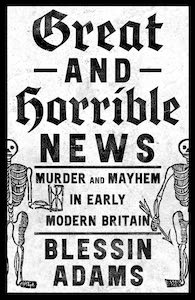 I wonder how many people said that when arrested by Blessin Adams when she was a police officer. Given that she served in the Norfolk Constabulary, probably quite a few. She has now, however, turned to crime herself as a writer but sticks with true-crime stories and in Great and Horrible News [William Collins] shows that the popularity of reading about real cases of grisly murder and mayhem is not a recent phenomenon. (Though recent activity on TikTok has shown increased level of ghoulishness.) I wonder how many people said that when arrested by Blessin Adams when she was a police officer. Given that she served in the Norfolk Constabulary, probably quite a few. She has now, however, turned to crime herself as a writer but sticks with true-crime stories and in Great and Horrible News [William Collins] shows that the popularity of reading about real cases of grisly murder and mayhem is not a recent phenomenon. (Though recent activity on TikTok has shown increased level of ghoulishness.)
From a gruesome suicide in York to robbery/murder in London’s Cheapside to a desperate woman driven to kill her own children, Blessin Adams’ book looks at half-a-dozen cases of sudden and violent death in 17th century England and how they were reported by coroners, diarists, in parish records and then, often sensationally, in cheap pamphlets sold on street corners.
THE WRITER RIDES OUT
In my time I have had the good fortune to meet, correspond with and pick the brains of some dedicated ‘super-readers’ who have made detailed studies of the lives and work of their favourite authors. To call them simply big fans would do them an injustice, for their in-depth knowledge and appreciation of their subjects goes far beyond mere fandom. I can think of numerous experts (all unpaid and done out of passion, not for profit) on whom I can call should I wish to know anything about Desmond Bagley, Victor Canning, Ian Fleming and numerous others, including the man once dubbed ‘The Prince of Thriller Writers’, Dennis Wheatley.
My go-to Wheatley expert has actually gone beyond the call of duty of most (though not all) ‘super-readers’ and has published Dennis Wheatley’s unpublished first novel, written whilst serving on the Western Front in the winter of 1917-18, and thought lost for almost a hundred years.
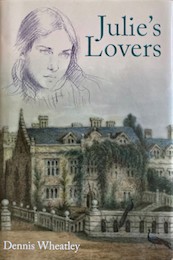
Charles Beck, the webmaster of the Dennis Wheatley website and a scholarly researcher of all things Wheatley, came across the typescript of Julie’s Lovers in 2020, when it surfaced at a London auction house. He bought it, and with the help of Wheatley’s grandson Dominic, has produced a splendid limited edition of the best-selling thriller writer’s ‘prentice work’. It is quite literally a limited edition, as the publishing credit proudly makes very clear: This edition comprises 40 copies, none of which are for sale.
I am indebted to Charles Beck who has generously provided a copy for the library here at Ripster Hall. The novel was written by Wheatley, then a young Gunnery Officer on the front line and is the story of Julie d’Etricourt, the daughter of a French Marquis, who is courted by suitors from both sides of the conflict. When the war ended, Wheatley’s father paid for the manuscript to be typed up and submitted to the publisher Cassells, who rejected it. Wheatley seems to have shrugged of the rejection and got on with his life, only returning to writing fiction – with spectacular results – thirteen years later.
More a wartime romance than a thriller, Julie’s Lovers is still very readable a century on and given the circumstances in which it was written, quite a remarkable book. There are also glimpses, even then, of Wheatley’s interest in the history of the French Revolution, which he was later to put to good use in his best-selling historical novels featuring Roger Brook.
BLOODY CHEEK
No, seriously. Of All The Bloody Cheek is the first volume of the ‘Mandrell Commissions’ which, back in 1965, introduced the exploits of international assassin Augustus Mandrell to the world of crime fiction, a world happy to amused and outraged by his off-beat, sometimes surreal, adventures told as inter-linked short stories.
Mandrell is totally anonymous and yet an international scourge. A master of disguise – the more ridiculous the better – and passionate lover of money, he is loyal only to himself. He regards himself as a connoisseur of beautiful women (and Afghan carpets!) and a professional killer for fun and profit. Anyone can hire the services of Mandrell Limited but be warned, he rarely leaves witnesses alive.
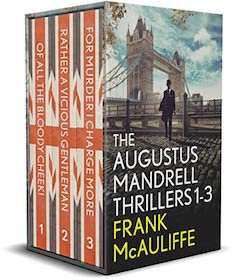
Now Joffe Books have issued all three volumes by Frank McAuliffe (1926-1986), initially as eBooks, which cover Mandrell’s career as a cheerful killer from England in 1939 to America in 1950, via France, Iran and Ireland during and just after World War II, but with a deliberate disregard for chronological accuracy. The second volume, Rather A Vicious Gentleman first appeared in 1968, followed by For Murder I Charge More in 1971, which won Frank McAuliffe an Edgar Award from the Mystery Writers of America.
McAuliffe’s flamboyant narrative style – never modest or understated – and his obvious spoofing of many of the traditional detective story tropes led to the assumption among American readers that the author simply had to be British. In fact McAuliffe, of Irish descent, lived in California and never visited Europe.
IN MEMORIAM
Rail strikes permitting, I am determined to attend a memorial lunch for the late Alan Williams, who died almost three years ago during the Covid epidemic, which prevented a proper memorial at the time.
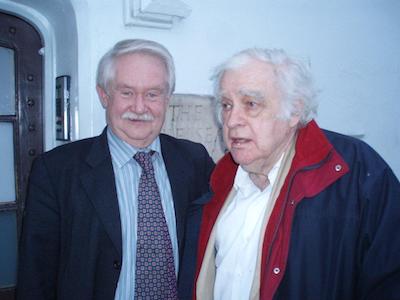
Alan, the son of actor Emlyn (and godson of Noel Coward) was a noted foreign correspondent before bursting on to the thriller-writing scene in 1962. He was called ‘the master of adult excitement’ and in Gentleman Traitor was probably the first writer to incorporate Kim Philby (whom he once met in a bar in Beirut) into spy fiction.
I first met Alan when I edited new editions of his thrillers Snake Water and The Tale of the Lazy Dog, which had been out of print for some years. Most of his (excellent) backlist is today available in Sapere Books.
Toodles,
The Ripster
|